By Jessica Morgan, Binghamton University
Living in a new country always has an adjustment period. There are certain things that we get used to living in one place, and it’s natural to be surprised when adjusting to a new culture. Studying abroad is no exception! As a current student studying at the Umbra Institute, I have learned a few new things about living abroad in Perugia, Italy. If you’re anything like me, you have probably researched the program, city, and “top things you need to know about studying abroad”. However, there are little things that I’ve noticed that took me by surprise. So, to help clear the way for future students and curious friends and family, I came up with a list of top things that surprised me about studying in Perugia.
1. Big grocery stores are swapped out for small markets
In the US, it’s normal to head to a huge grocery store every week or two to get a cart full of groceries, brought back in your car. Well, things work differently in Perugia. Living in the city center, the stores are very small and localized. It’s more normal to stop in to grab what you need for dinner that night or for a few days. This is preferred especially due to the size of the store, and because you will be carrying it by foot!
2. Winter in Perugia still exists!
Now, I know we all may have a concept of Italy as being quite warm and Mediterranean. Although this isn’t false, it’s important to know that it also gets to be cold in the winter. This is important to know when you are packing because you will need your layers! Also, the temperatures of apartments and buildings in Italy are kept lower due to laws tackling climate change, so they tend to reflect the temperature outside more.
3. You will be getting in your steps
Perugia has a very nice city center that looks out to the Umbrian countryside. However, like many other towns in the area, it was built on a hill that has lots of stairs and roads going up and down. It makes for a great view and beautiful walking paths, but be ready to take on some steps, and a good pair of sneakers is essential!
4. Perugia is known as the “university city”
The Umbra Institute is just one, and probably the smallest, of multiple universities in Perugia. What I was surprised about was how many students there were from the other universities. The University of Perugia and the University for Foreigners together have around 30,000 students. This means you’re bound to meet some college students who are Italian or from other countries. Umbra even hosts some events and has classes that these students can attend.
5. Coffee is essential to Italian life
If there is one thing that Italians are always passionate about, it’s coffee. Coming from the US, most of us are used to drinking big cups of coffee, often iced. If you try to drink coffee this way in Italy, you’ll struggle. Don’t worry- there are ways to get your iced coffee fix (my favorite spot is Pinturrichio’s), but it is much more common to order an espresso or cappuccino in the morning. Umbra conveniently has 2 vending machines where you can get whichever hot coffee you prefer!
6. The double meaning for a “bar”
Did you know that a bar in Italy does not just mean a pub? This one really surprised me! Practically every bar- which is known in the US as a cafe, transitions into a bar for drinks at night. I guess it makes sense that they use the same word for both!
7. Clotheslines are the natural dryers of Italy
Okay, this one I knew before coming to Perugia, and it made me nervous. Although I wasn’t surprised by it, there is a learning curve to the art of getting your laundry done. Planning ahead and communicating when you need to use the drying racks or clothesline with your roommates are essential. But in no time, you’ll get the hang of it and it will become “the new norm”.
8. Perugia is part of the “green heart” of Italy
The Umbria region is the furthest south-landlocked region of Italy. They embrace the beauty that is shown throughout the region and are nicknamed the “green heart” of Italy. There are lots of fields and hiking trails around- which if you love the outdoors like I do, will make you feel at home. The Apennine Mountain Range can also be seen from Perugia as well, showing great views of snow-capped mountains in the region.
9. From Baci, to Perugina, to Nutella, Perugia has your chocolate
Among many specialty foods, chocolate is one of the biggest products in Perugia. Throughout Italy, people adore a good chocolate cornetto, or practically anything topped with Nutella. I found out that Nutella was first invented in Italy, making it very popular. In Perugia, Perugina chocolate is supreme, and chocolate stores selling ‘Baci’ can be found everywhere. For chocolate lovers, you’re headed to a great place! You can even participate in chocolate-making classes, and yearly chocolate festivals.
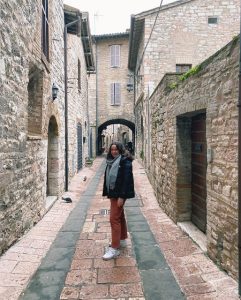
10. Perugia is an Etruscan city, with a history that is over 2300 years old
You may have noticed in pictures that the Umbra Institute is located in a historical city center. However, you may not know that Perugia is one of the oldest cities in Italy. It started as an Etruscan town, which is still represented through the walls surrounding the city and a huge arch in the center. There are many hidden historical facts and architectural finds within the old city, which you will have to find for yourself!
11. There are train lines that connect to the major cities
Perugia is located in central Italy, between Florence and Rome. Although it may not be a town that Americans have heard of before, it is located in the central area of Italy and works as a travel hub both north and south. There are easily navigable trains and buses that can take you to Florence or Rome, as well as many other Italian cities, as you wish. I quickly became accustomed to the trains and how to get places, and I’m sure you will too.
12. Italian is heard throughout Perugia
Because Perugia is less exposed to international tourism, Italian can be heard everywhere. It might be a bit nerve-wracking to take on a new language, but it truly makes the experience so much more authentic and exciting! Don’t worry- community members are happy to speak slowly, and we are always encouraged to go to the staff at Umbra with any questions we might have. I was surprised by how quickly I was able to adjust to living somewhere where I had no language experience prior.
13. The Umbra Institute is a small university with a big community
Coming from a larger American university, I was so surprised when I found out there were only 96 people in my program. However, once we got to Perugia, it made sense that our program was small in order to provide a bigger sense of community. With small classes, it’s been easy to make friends and get to know the professors and staff. I was so surprised when they had all of our names memorized within a week! They want to get to know the students, and with all the community outreach and field trips that happen, it’s easy to become close with everyone. Even though the program is small, Umbra has a surprisingly large network of connections throughout the region as well, making the little university more known by the community.
14. Buying a slice of pizza using a coin…
Coming from the US, we all noticed how the food costs less in Perugia. Local products are known to be especially cheap which makes it easier to go out to eat and taste some Italian foods. Another small thing that surprised me about this also was that people are a lot more likely to pay using coins and cash. So when you’re going to grab that slice of pizza for a euro, grab a coin to pay and the owner will be appreciative!
As someone who insisted on researching everything I could before studying abroad, I didn’t expect to have so many cultural differences that would catch me by surprise. Don’t worry though, there is nothing on this list to be afraid of. Each new unexpected thing we experience while studying abroad can lead to exciting new adventures, a funny story to tell, or something that can even remind you of home. I hope this list gives future students, families, and friends a peace of mind and sparks excitement about studying abroad. And although I can speak on my own experiences, there are so many things out there for you to discover, so get out there and enjoy studying abroad!
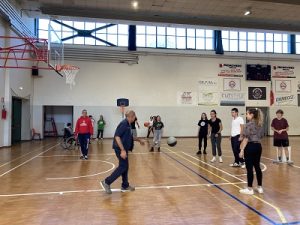 In their session, the Umbra presenters discussed the research they are conducting to assess how the experience at The Umbra Institute changes students in measurable ways. The latest part of this ongoing project was the attempt to evaluate whether community engagement, in both students’ free time and as part of their coursework, has aided in the growth of students during their time abroad. Community engagement has long been a central pedagogical pillar of the Umbra Institute and is well-integrated into academic and extracurricular offerings. Although the Institute recognizes the importance of community-engaged learning, it is also important for the empirical data collected in this research to demonstrate which facets of the student experience play the greatest role in the students’ growth. Courses with service-learning components, Seminar and Practica courses, volunteering, spending time with local people and university students, and placing importance on learning Italian are some of the most influential aspects of student life that have a positive influence on expanding one’s openness to diversity and obtaining a more culturally-rich experience while in Italy. This research is part of an ongoing study that will be carried out and updated in future semesters. However, the current findings will be published in an upcoming academic publication. Stay tuned!
In their session, the Umbra presenters discussed the research they are conducting to assess how the experience at The Umbra Institute changes students in measurable ways. The latest part of this ongoing project was the attempt to evaluate whether community engagement, in both students’ free time and as part of their coursework, has aided in the growth of students during their time abroad. Community engagement has long been a central pedagogical pillar of the Umbra Institute and is well-integrated into academic and extracurricular offerings. Although the Institute recognizes the importance of community-engaged learning, it is also important for the empirical data collected in this research to demonstrate which facets of the student experience play the greatest role in the students’ growth. Courses with service-learning components, Seminar and Practica courses, volunteering, spending time with local people and university students, and placing importance on learning Italian are some of the most influential aspects of student life that have a positive influence on expanding one’s openness to diversity and obtaining a more culturally-rich experience while in Italy. This research is part of an ongoing study that will be carried out and updated in future semesters. However, the current findings will be published in an upcoming academic publication. Stay tuned!

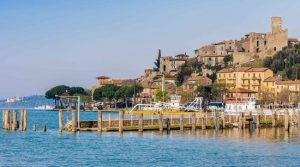 Lake Trasimeno
Lake Trasimeno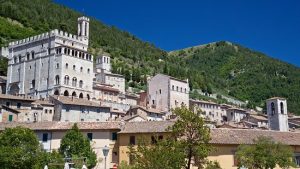
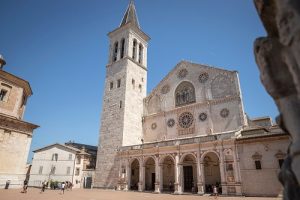
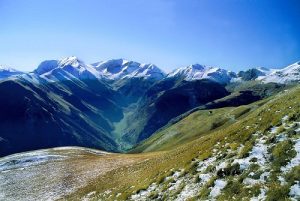

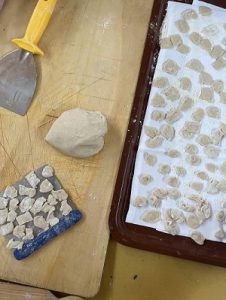 With my outgoing nature, I quickly became acquainted with the people in my program. We went out for an aperitivo, invited each other over for homemade dinners, make-your-own pizza nights, and went out on the town. All of the friends who I met and stayed around were like-minded and also made the decision to come alone to Perugia.
With my outgoing nature, I quickly became acquainted with the people in my program. We went out for an aperitivo, invited each other over for homemade dinners, make-your-own pizza nights, and went out on the town. All of the friends who I met and stayed around were like-minded and also made the decision to come alone to Perugia.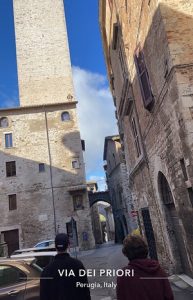 Pictured on the left are two of my roommates walking down the street we live on, Via Dei Priori, on the day we moved in. As you can see, the streets are incredibly narrow compared to American streets – especially when cars drive up and down the street! Whenever a car comes, all the pedestrians huddle on one side to allow the car to pass through. While this was unexpected at first, it is a practice we quickly got used to as we walk streets like this every day. On the left side of the image, there is a large tower: this is Torre degli Sciri, a 13th-century medieval structure, and our next-door neighbor! The tower is now open to visitors for free on the weekends (though tips are appreciated). As my roommates and I explored the city during our first days in Perugia, we decided to climb the tower to check out the view of our new home. The views we were met with were nothing short of breathtaking:
Pictured on the left are two of my roommates walking down the street we live on, Via Dei Priori, on the day we moved in. As you can see, the streets are incredibly narrow compared to American streets – especially when cars drive up and down the street! Whenever a car comes, all the pedestrians huddle on one side to allow the car to pass through. While this was unexpected at first, it is a practice we quickly got used to as we walk streets like this every day. On the left side of the image, there is a large tower: this is Torre degli Sciri, a 13th-century medieval structure, and our next-door neighbor! The tower is now open to visitors for free on the weekends (though tips are appreciated). As my roommates and I explored the city during our first days in Perugia, we decided to climb the tower to check out the view of our new home. The views we were met with were nothing short of breathtaking: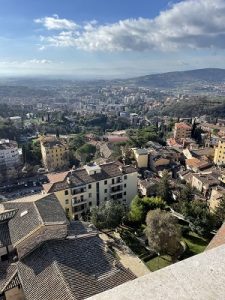 Pictured on the right, the entire city of Perugia can be seen – and beyond! The flat valleys behind the city contrast with the stark mountains in the back that crest above the clouds. Rays of sun shower down from above and illuminate the entire town, allowing the vibrant colors of the houses below to really pop. Additionally, you can see the emphasis on nature I was mentioning above; there are so many trees and green spaces all throughout the city! I wish more American cities followed this European style of city planning and featured more green spaces because they really bring a lot of character to the city of Perugia.
Pictured on the right, the entire city of Perugia can be seen – and beyond! The flat valleys behind the city contrast with the stark mountains in the back that crest above the clouds. Rays of sun shower down from above and illuminate the entire town, allowing the vibrant colors of the houses below to really pop. Additionally, you can see the emphasis on nature I was mentioning above; there are so many trees and green spaces all throughout the city! I wish more American cities followed this European style of city planning and featured more green spaces because they really bring a lot of character to the city of Perugia.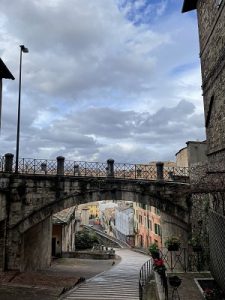
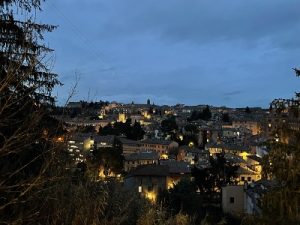 Learning about ancient Rome, the Renaissance, and food culture while in Italy allows me to have a better appreciation for the city I live in, such as when observing art, walking through ancient streets, or eating at local restaurants. So far, my first impressions of Perugia and the Umbra institute have been resoundingly positive. I have had such a great time so far, and I can’t wait for everything that comes next in my Italian study abroad experience!
Learning about ancient Rome, the Renaissance, and food culture while in Italy allows me to have a better appreciation for the city I live in, such as when observing art, walking through ancient streets, or eating at local restaurants. So far, my first impressions of Perugia and the Umbra institute have been resoundingly positive. I have had such a great time so far, and I can’t wait for everything that comes next in my Italian study abroad experience!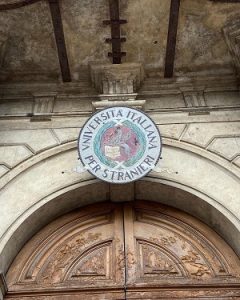 Of course, I had my academic highs and lows throughout the semester, but one thing I cannot stress enough was that I was never alone. Lucky for me, as a Direct Enrollment student, I have the privilege to belong to two communities. One at L’Università per Stranieri, and another at The Umbra Institute. Even though I treasure the former, the latter is what truly made an impact on me. There is something truly magical that resides in the essence of the people who inhabit all of the offices of the Umbra Institute. Never have I ever seen such a community of people that are not only passionate about what they do but so effortlessly compassionate in their efforts. It is quite remarkable.
Of course, I had my academic highs and lows throughout the semester, but one thing I cannot stress enough was that I was never alone. Lucky for me, as a Direct Enrollment student, I have the privilege to belong to two communities. One at L’Università per Stranieri, and another at The Umbra Institute. Even though I treasure the former, the latter is what truly made an impact on me. There is something truly magical that resides in the essence of the people who inhabit all of the offices of the Umbra Institute. Never have I ever seen such a community of people that are not only passionate about what they do but so effortlessly compassionate in their efforts. It is quite remarkable.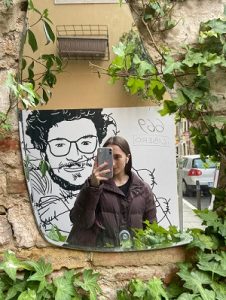 As I reflect on my experience during my first semester, I realized that I have never laughed so much, learned so much, and lived so much in a semester of university. Therefore, as I sit back here in these hallways once again ready for another exhilarating semester, I remind myself that I am here for a younger Victoria who always dreamed of being bilingual. I am here for the present version of myself who found a passion in language acquisition. And lastly, I am here to prove to my future self that I can excel at whatever I put my mind to.
As I reflect on my experience during my first semester, I realized that I have never laughed so much, learned so much, and lived so much in a semester of university. Therefore, as I sit back here in these hallways once again ready for another exhilarating semester, I remind myself that I am here for a younger Victoria who always dreamed of being bilingual. I am here for the present version of myself who found a passion in language acquisition. And lastly, I am here to prove to my future self that I can excel at whatever I put my mind to.